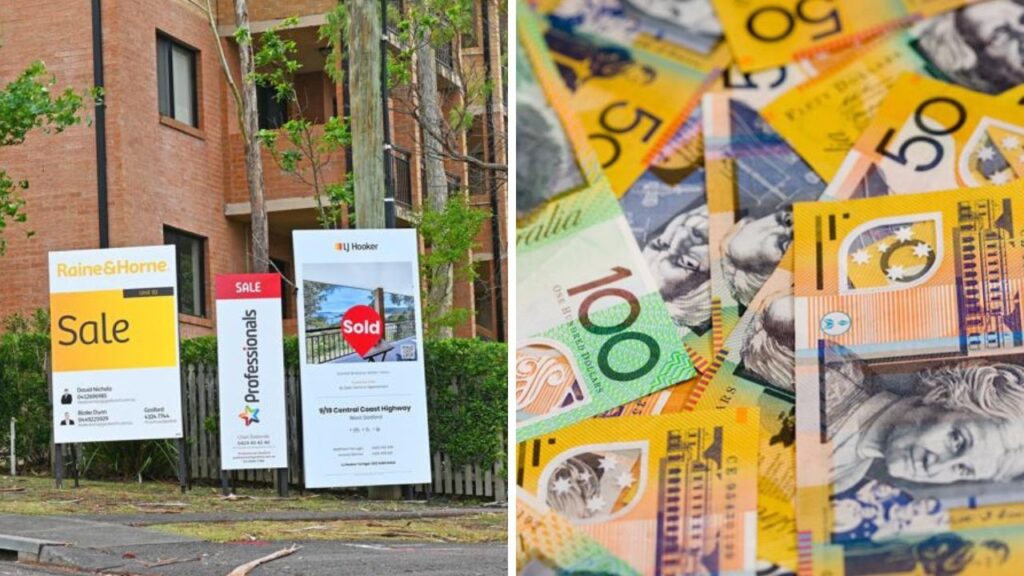Real reason you can’t buy a house
Written by admin on August 4, 2024
When former Fox News host Tucker Carlson addressed the Australian Freedom Conference in Melbourne in early July, he grabbed one of the live wires of Australian politics and society with both hands – the impact of high levels of migration on housing prices.
Carlson pointed to migration as the “one reason” housing prices were high and that it was a simple issue of supply and demand.
When looking back over housing price data of the last 40 years and the accompanying earnings growth and migration figures, it swiftly becomes clear that in aggregate over time, there is a long list of drivers influencing the market.
Property investors
While property investors have long played a role in the mix of the nation’s housing, in the mid to late 1990s, that began to change dramatically.
Between 1981 and 1995, the proportion of occupied housing stock owned by property investors ranged between 18.3 per cent and 18.8 per cent, a generally stable figure.
Between 1995 and 2018, the relative proportion of occupied housing stock owned by property investors rose by 47.3 per cent, as the investor-held share of occupied housing stock rose from 18.4 per cent to 27.1 per cent.
Despite historically holding an average of 18.4 per cent of housing stock between 1981 and 1995, between 2002 and the present, investors accounted for an average of 35.9 per cent of new mortgage lending and hit an absolute peak share of 49.0 per cent in 2004.
In decades past, investors also played a much greater role in building new housing stock and thereby minimising the impact their collective demand had on the equilibrium of the market. In 1985, the share of new lending to property investors for newly constructed homes or new builds accounted for a peak of 68.1 per cent of all lending to investors.
More recently, over the last 12 months of data, the proportion of new mortgages flowing to investors for newly built homes and construction accounted for an average 17.8 per cent of lending to property investors.
In short, investors are building far less new housing stock than they once did, and make up a much greater proportion of home buying activity than in previous decades when their share of housing stock was significantly lower and prices tracked earnings more closely than it does now.
Migration
Between 1990 and 2004, the average rate of net migration was 91,000. Yet despite this being less than 40 per cent of the average level seen prior to the pandemic, between 2000 and 2003, housing prices saw their strongest short-term growth in inflation adjusted terms on record.
However, from 2006 onwards, migration began to play a significantly more vital role in supporting housing price growth.
According to an analysis by AMP chief economist Shane Oliver: “Up until 2005, the housing market was in rough balance. It then went into a massive shortfall of about 250,000 dwellings by 2014, as underlying demand surged with booming immigration”.
Mr Oliver went on to conclude in a later analysis that the accumulated shortfall in housing would rise to around 200,000 by the end of June. It was noted that this was a conservative analysis and that if the decline in the number of people per household was taken into account, it could be around 300,000 homes.
Another way of looking at the impact of migration is the size of the population of what was at least historically, the prime age range for buying a first home.
Prior to 2006, the size of the 25 to 34 age cohort was remarkably stable for well over a decade. But as the Howard and later Rudd governments more than doubled migration from its average in the decade prior, the size of this age demographic began to surge.
In the 18 years since, it has continued to grow, with the only exception being the impact of the pandemic.
Over the same time, the amount of housing stock being sold each year has declined dramatically since the early 2000s, with the current level of housing turnover having more in common with the era of the 1990s recession.
As housing turnover falls and the number of prospective buyers rises, it puts upward pressure on housing prices in an expression of the most basic tenet of economics, supply and demand.
Historically, the additional demand added to the property market by migration has been a gradual process.
According to figures from the Australian Bureau of Statistics, for permanent migrants who arrived in the five years prior to the 2021 census, the home ownership rate is 38.3 per cent. For those who have been in the country for five to 10 years, the home ownership rate is 55.6 per cent.
Putting it all together
At any given time, the state of the property market and by extension housing prices is a lot like a seesaw. There are factors that are in that moment in time pushing one side up, and on the other side of the seesaw, factors pushing prices down, with the balance between the two determining the direction of the market.
Migration is one of those factors.
At times, it has been a minor factor, fading into the background amid what are in that moment far more potent and influential factors such as investor demand, weaker lending standards or interest rates.
At other moments in time, it can play a more influential role through its knock-on effects and put greater upward pressure on prices.
No one factor is directly responsible for all the issues we currently face as a nation with affordable housing.
More Coverage
From the popularisation of property investing through various TV programs such as The Block to the multiple rounds of intervention by policymakers to support the housing market over the decades, there is a laundry list of political, social, psychological and economic changes that have led us to this point.
Ultimately, the issue of housing prices is a complex one which requires an assessment of a multitude of factors to fairly assess the drivers of the market over a long-term time horizon.
Tarric Brooker is a freelance journalist and social commentator | @AvidCommentator
Read related topics:Melbourne







